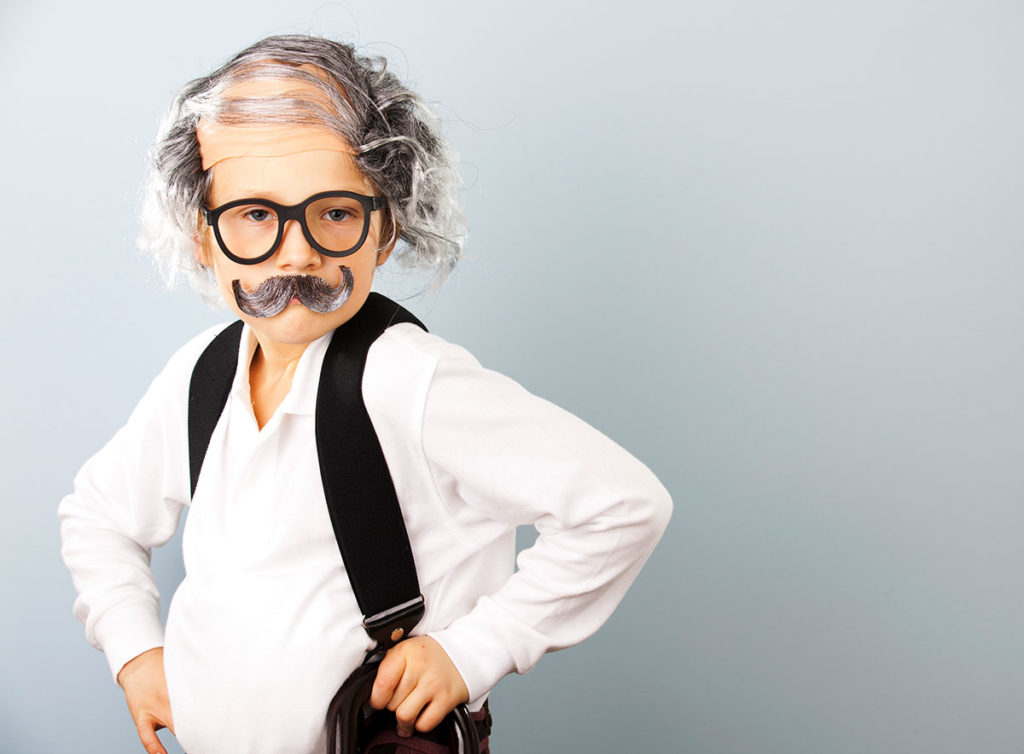It’s Time We Start Talking About Ageism

In this excerpt from her new book, Disrupting the Status Quo of Senior Living: A Mindshift, Jill Vitale-Aussem, President and CEO of The Eden Alternative, takes a serious look at how we view aging. Creating healthy cultures starts with understanding and addressing ageism.
We’re All Aging
Right now, as you read this sentence, you’re aging. We all are—every minute of every day. In youth, the passing of a day, a month, or a year isn’t viewed as a negative because the passing of time means we’re growing up. And growing up is viewed as a good thing. Many times, we’ll hear kids describe their age as “7 and a half” or “almost 8” in anticipation of being one year older, and younger people excitedly look forward to the milestones in their future—being old enough to drive, graduating from college, landing a first job, getting a promotion, raising kids.
But then, as we move through our lives, “growing up” becomes “growing old,” and it’s no longer viewed as a positive thing. Many of us begin to downplay, or even fib about, our age. We mourn each passing year. Or we get so caught up in day-to-day life that we ignore the passing of time, and before we know it, decades have slipped by.
Getting Old in America
It makes sense that we would avoid thinking about old age. We know that, unless things shift drastically in our society, getting old means we’ll likely be looked down upon, pushed aside, pitied, and perhaps even laughed at. That’s certainly not something to look forward to. So instead of facing reality, we spend exorbitant amounts of money, time, and energy in a desperate, and always unsuccessful, attempt to hold onto youth.
When we do honor aging, it’s generally in the form of celebration of older folks who don’t act their age and are able to keep up with the youngsters. We call them “rock stars” and “super agers,” implying that the majority of older people, who aren’t running marathons or climbing mountains, are somehow deficient. Beneath these pseudocelebrations of age, at the core is the message that value lies only in youthfulness. As my 20-something trainer at the gym once said to me, “It’s not bad to be old as long as you seem like you’re young.”
As I’ve become more aware of ageism, I see it everywhere. Even at the grocery store. In my local store, a sign is posted in every checkout line that reads, “If you’re lucky enough to look under 30, please have your ID ready.” Even grocery stores are judging us on our age and appearance! I contacted the store and asked them to reconsider the wording on the sign. They were bewildered that anyone could find the sign offensive, even though the message was insulting the appearance of their typical grocery store patrons. The signs are still there.
We should be as shocked and mortified by a sign like this as we would be to see a sign insulting people because of their race or gender. This type of message devalues a whole group of people and has devastating consequences. But ageism is so commonplace that we seldom notice it, let alone question it.
Ageism is Everywhere
The negative messaging is everywhere. Before even reaching that sign in the checkout lane, a walk through a typical grocery store bombards us with messages about our youth-obsessed culture. From the greeting card aisle stocked with cards showing mock sympathy at the advent of another birthday, to the hair coloring and antiaging wrinkle creams in the cosmetics aisles, we are told, clearly, and without apology, that being old is something to be avoided at all cost.
There are many disturbing examples of ageism among younger generations. A 2013 study examined 84 Facebook groups focused on older individuals. All of the groups’ creators were under the age of 60 with many being in the 20 to 29 age group. Facebook’s Community Standards, the researchers noted, state hate speech is not tolerated and that singling out individuals based on religion, sex, gender, sexual orientation, disability, or disease constitutes a violation of the site’s terms. Age was not listed, which led researchers to believe that many of the groups would focus on negative stereotypes of aging. They were right. All but one of the group descriptions studied reflected very negative views of older people.
One group description stated, “Old people are a pain in the [expletive deleted by study authors] as far as I’m concerned and they are a burden on society. I hate everything about them, from their hair nets in the rain to their white Velcro sneakers. They are cheap, they smell like [expletive deleted by study authors] … they are senile, they complain about everything, they couldn’t hear a dump truck.” Others suggested that elders should be banned from public activities such as shopping, face a firing squad, and participate in a voluntary euthanasia program.
Imagine, instead, a society in which gray hair was a symbol of achievement and status rather than one of decline and helplessness. Perhaps rather than pretending that old age only happens to others, people would acknowledge earlier in life the facts of aging, make better lifestyle decisions, and put in place adequate financial plans for their futures. Perhaps elders would see the value that can come from living in a community setting and wouldn’t feel the need to cling to their homes when their plan to age in place is no longer working for them.
Covert Ageism
Ageist beliefs don’t always show themselves in blatant discriminatory remarks. Often, they come under the guise of well-meaning compliments. We go to happy hour after work with our colleagues and happily exclaim, “Thank you!” to the bartender who asks for identification to buy a drink. We praise and compliment people who look younger than they are and say things like, “You look great for your age!” and “60 is the new 50.”
Stereotyping is another often unrecognized component of ageism. When I’m interviewing job candidates, I’ll often ask them why they want to work in a senior living community. “I love older folks!” many will say, “They have so much wisdom and are so nice.” This, as with most types of prejudice, is an example of stereotyping. Researchers in the field of gerontology have pointed out the prevalence of generalizations about older people. But according to Ashton Applewhite, author of This Chair Rocks:A Manifesto Against Ageism, the longer we live, the more different from each other we actually become.
As someone who has worked with elders for two decades, I can say without a doubt that not all old people are nice. And not all old people are wise. At any stage of life, some people are wise and kind, and some are not. When we stereotype, even in a seemingly positive way, we stop seeing people as individuals and pave the way for prejudice to take hold.
Societal Views of Aging
Negative messages about aging are everywhere. Movies, news stories, and TV shows depict elders as foolish, cranky, or pathetic. Skincare product advertisements urge us to combat wrinkles and fight aging, reminding mainly women that much of their value is based upon retaining a youthful appearance.
The negative messaging works. As a nation, we spend billions of dollars on anti-aging treatments. In 2012, pharmacy benefit management service Express Scripts reported that Americans with private insurance spent more on prescriptions to fight aging-related conditions such as mental alertness, sexual dysfunction, menopause, aging skin, and hair loss than they did on medications to treat diseases.
The aging of the baby boomer generation has pushed our negative views about old age straight to the forefront. As the nation prepared for the phenomenon of a large cohort of old people, we began hearing warnings. A 2009 Forbes column predicted a future in which baby boomers would “begin migrating from factory floors and corner offices to wheelchairs and adult diapers.” Today, the aging boomer population is often referred to as a ‘silver tsunami,’ sending the message that the aging of society should be viewed as a disaster – one in which a large part of the population is no longer contributing and has become useless, debilitated, and a drain on resources. These messages, surrounding us in everyday life, seep into our subconscious minds.
The Impact of Ageism
Unlike other types of prejudice, we will all be victims of ageism, assuming we live long enough. And these pessimistic views of old age cause significant damage. Research shows that if we believe the negative stereotypes about aging – that it’s all downhill, that we become a drain on society, that we have no value – these beliefs become a self-fulfilling prophecy. People with negative self-perceptions of aging are more likely to develop dementia and less likely to recover from a debilitating accident.
The images and beliefs we hold also have an incredible impact on the way we function in day-to-day life. Researchers have found that those who are exposed to negative stereotypes about aging performed more poorly in the areas of memory, writing, and mathematics than those exposed to positive stereotypes.
Even physical abilities are impacted by a person’s mindset. In her paper, “Mind Matters: Cognitive and Physical Effects of Aging Self-Stereotypes,” Becca R. Levy, Ph.D., of Yale University describes a study in which the gait and swing time (amount of time that the foot is lifted off the ground when walking) of older adults were measured before and after being exposed to aging stereotypes. Those who were exposed to positive aging stereotypes had significant increase in both swing time (indicating better balance) and gait speed. Incredibly, these improvements were similar to those experienced by older people who exercised rigorously for several weeks.
What we believe about aging can also impact how long we live. Those who hold negative self- perceptions of aging are likely to die a whopping 7.5 years earlier than those who have positive views.
When we change our thoughts, we change our lives.
Our country has invested a significant amount of resources into reducing healthcare costs via traditional medical interventions. What would happen if we also focused on changing society’s views on aging? The evidence clearly indicates that people would live longer and healthier lives with, presumably, less need for costly medical interventions.
It Starts with Us
If we want to transform our communities, strengthen our society, and change the perception of aging, we have to start with ourselves and work from the inside out. As Growing Bolder CEO Marc Middleton says, if we wait for institutional change to shift views of aging, it will be too late for all of us. It will happen, he suggests, one person at a time. As AARP’s Disrupt Aging initiative explains, changing our ageist culture requires that we examine and question our own deep-seated beliefs and fears about aging. And that’s not an easy task. In the words of writer Sally Kempton, “It’s hard to fight an enemy who has outposts in your head.”
Because ageism is so prevalent and unquestioned in our daily lives, it can be difficult to identify it. Becoming aware of the messages we’re receiving requires intention and focus.
I often encourage groups I’m working with to commit to an ageism awareness challenge. The challenge requires that they set their intention on becoming hyperaware of negative messages about aging for a week. I ask them to pay attention to what they see when they’re watching television and reading magazines, what they hear when they’re at happy hour or chatting in the break room, and, most importantly, what they themselves are thinking and saying. I ask them to take notes of their experiences and to come back together and discuss their findings with the group. It’s always eye-opening. Such an exercise can uncover the shocking extent to which negative views on aging impact our policies, our practices, and our organizations. As one person told me, “Once you learn about ageism and pay attention to it, you realize it is absolutely everywhere. Now I can’t stop seeing it!”
Excerpted from Chapter 3, “Who Wants to Get Old?” in Disrupting the Status Quo of Senior Living: A Mindshift, by Jill Vitale-Aussem; © 2019 by Health Professions Press. For permission to quote from this excerpt, contact rights@healthpropress.com.
Read the book!
 Disrupting the Status Quo of Senior Living A Mindshift By Jill Vitale-Aussem, LNHA Copyright © 2019 by Health Professions Press, Inc. All rights reserved.
Disrupting the Status Quo of Senior Living A Mindshift By Jill Vitale-Aussem, LNHA Copyright © 2019 by Health Professions Press, Inc. All rights reserved.
Melding aging research, ideas from some of the most influential thinkers in the aging services field, and the author’s own experiences transforming senior living cultures, this book challenges readers to examine their own biases, question long-held practices, and work toward creating vibrant cultures of possibility and growth.


